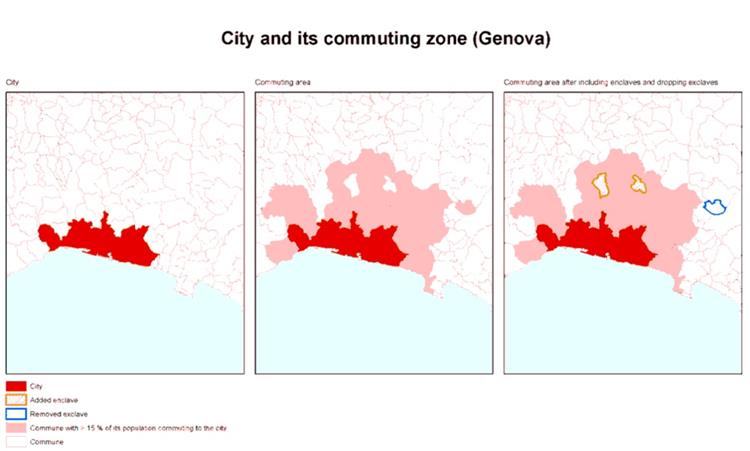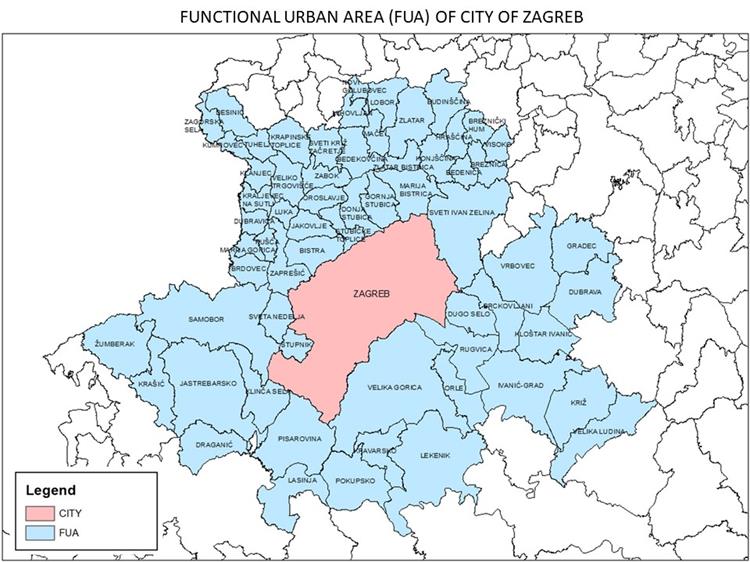Functional urban areas (FUA)
The functional urban area consists of the city and its commuting zone. Once all cities have been defined, a commuting zone can be identified based on commuting patterns using the following steps:
Step 1: If 15% of employed persons living in one city work in another city, these cities are treated as connected cities. In this case, the first city is a part of the functional urban area of the second city and does not have its own FUA. For example, more than 15% of the employed persons living in the Bulgarian city of Pernik work in Sofia. That is why the city of Pernik belongs to the FUA of Sofia and FUA of Pernik has not been defined.
Step 2: All municipalities with at least 15% of their employed residents working in a city are identified.
Step 3: Municipalities surrounded by a single functional area are included and non-contiguous municipalities are dropped. If one municipality meets the criteria to be a part of the Functional Urban Areas of two cities, for instance, a municipality located between two large cities, it should be assigned to the FUA to which the higher percentage of the employed residents is commuting. In the case of the Greater cities, commuting flows should be examined towards the entire greater city but not to the city.

The commuting analysis should cover in principle all employed persons (including self-employed, civil servants and employees). Students should not be included in case that they are not commuting to work.

Step 1: If 15% of employed persons living in one city work in another city, these cities are treated as connected cities. In this case, the first city is a part of the functional urban area of the second city and does not have its own FUA. For example, more than 15% of the employed persons living in the Bulgarian city of Pernik work in Sofia. That is why the city of Pernik belongs to the FUA of Sofia and FUA of Pernik has not been defined.
Step 2: All municipalities with at least 15% of their employed residents working in a city are identified.
Step 3: Municipalities surrounded by a single functional area are included and non-contiguous municipalities are dropped. If one municipality meets the criteria to be a part of the Functional Urban Areas of two cities, for instance, a municipality located between two large cities, it should be assigned to the FUA to which the higher percentage of the employed residents is commuting. In the case of the Greater cities, commuting flows should be examined towards the entire greater city but not to the city.

The commuting analysis should cover in principle all employed persons (including self-employed, civil servants and employees). Students should not be included in case that they are not commuting to work.
